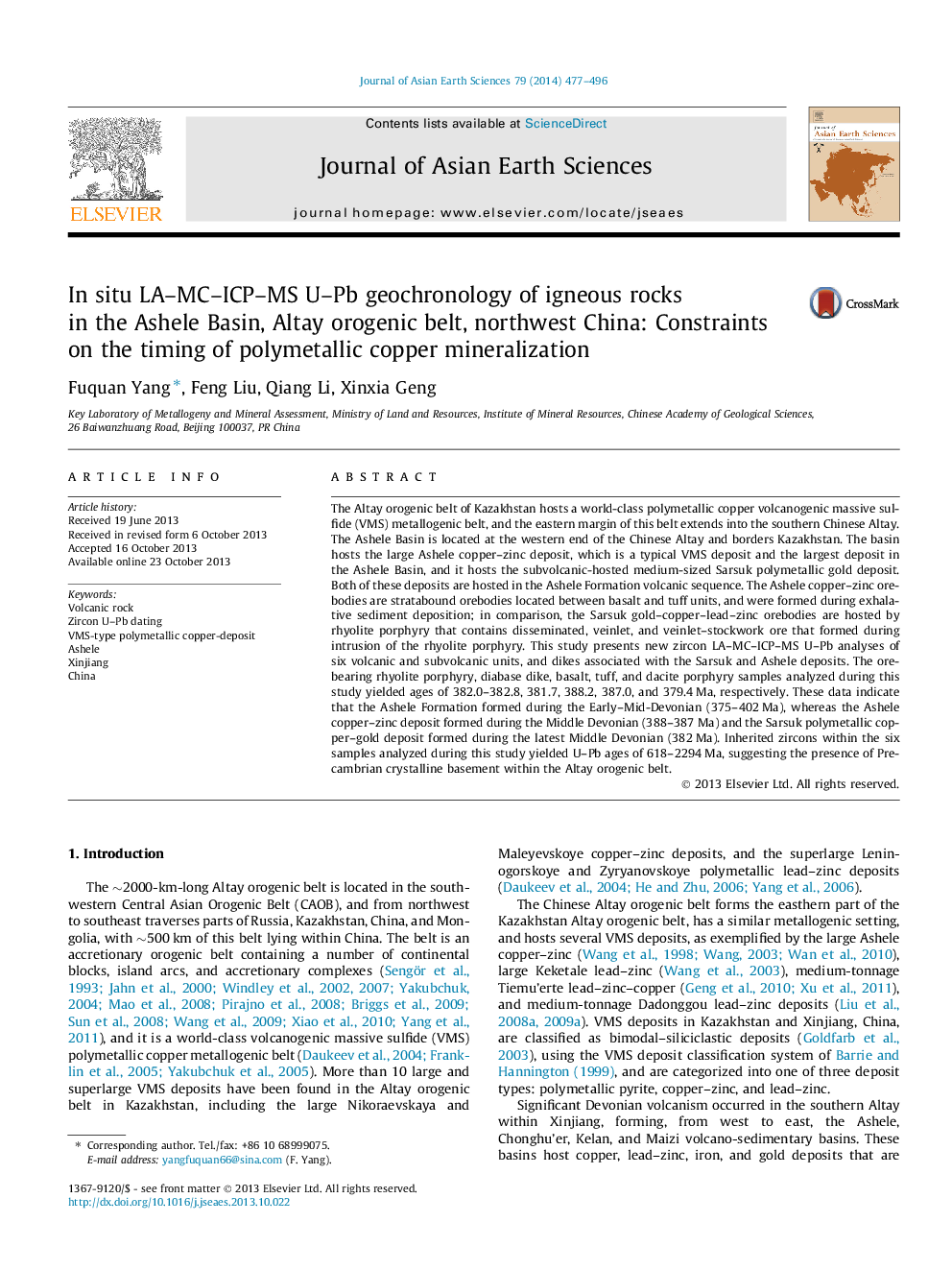| Article ID | Journal | Published Year | Pages | File Type |
|---|---|---|---|---|
| 4730924 | Journal of Asian Earth Sciences | 2014 | 20 Pages |
•Ashele Cu–Zn deposit is a VMS deposit.•Sarsuk polymetallic Au deposit is associated with rhyolite porphyry.•The Ashele Formation yield U–Pb ages of 375–402 Ma.•The exhalative–sedimentary period of mineralization formed at 388 Ma.•Au–Cu–Pb–Zn and Cu mineralization formed at 379–382 Ma.
The Altay orogenic belt of Kazakhstan hosts a world-class polymetallic copper volcanogenic massive sulfide (VMS) metallogenic belt, and the eastern margin of this belt extends into the southern Chinese Altay. The Ashele Basin is located at the western end of the Chinese Altay and borders Kazakhstan. The basin hosts the large Ashele copper–zinc deposit, which is a typical VMS deposit and the largest deposit in the Ashele Basin, and it hosts the subvolcanic-hosted medium-sized Sarsuk polymetallic gold deposit. Both of these deposits are hosted in the Ashele Formation volcanic sequence. The Ashele copper–zinc orebodies are stratabound orebodies located between basalt and tuff units, and were formed during exhalative sediment deposition; in comparison, the Sarsuk gold–copper–lead–zinc orebodies are hosted by rhyolite porphyry that contains disseminated, veinlet, and veinlet–stockwork ore that formed during intrusion of the rhyolite porphyry. This study presents new zircon LA–MC–ICP–MS U–Pb analyses of six volcanic and subvolcanic units, and dikes associated with the Sarsuk and Ashele deposits. The ore-bearing rhyolite porphyry, diabase dike, basalt, tuff, and dacite porphyry samples analyzed during this study yielded ages of 382.0–382.8, 381.7, 388.2, 387.0, and 379.4 Ma, respectively. These data indicate that the Ashele Formation formed during the Early–Mid-Devonian (375–402 Ma), whereas the Ashele copper–zinc deposit formed during the Middle Devonian (388–387 Ma) and the Sarsuk polymetallic copper–gold deposit formed during the latest Middle Devonian (382 Ma). Inherited zircons within the six samples analyzed during this study yielded U–Pb ages of 618–2294 Ma, suggesting the presence of Precambrian crystalline basement within the Altay orogenic belt.
